- FPM (Fast Page Mode)
- EDORAM (Extended Data Output RAM)
- SDRAM (Synchronous Dynamic RAM)
- RDRAM (Rambus Dynamic RAM)
- DDR SDRAM (Double Date Rate SDRAM) atau sering disebut DDR saja.
- DDR 2
- DDR 3
Kamis, 25 Februari 2010
Memori Primer RAM
Intel Pentium XE
better.
Kamis, 18 Februari 2010
Detail Spesification
| SL9AP | 3.60 GHz | 960 | 2 | 800 MHz | 65 nm | C1 | 4 MB (2x2) | LGA775 | 05B |
| SL9K7 | 3.60 GHz | 960 | 2 | 800 MHz | 65 nm | D0 | 4 MB (2x2) | LGA775 | 05A |
| SL95V | 3.40 GHz | 950 | 2 | 800 MHz | 65 nm | C1 | 4 MB (2x2) | LGA775 | 05A |
| SL94P | 3.40 GHz | 950 | 2 | 800 MHz | 65 nm | B1 | 4 MB (2x2) | LGA775 | 05B |
| SL9K8 | 3.40 GHz | 950 | 2 | 800 MHz | 65 nm | D0 | 4 MB | LGA775 | 05A |
| SL9QQ | 3.40 GHz | 945 | 2 | 800 MHz | 65 nm | D0 | 4 MB (2x2) | LGA775 | 05A |
| SL9QB | 3.40 GHz | 945 | 2 | 800 MHz | 65 nm | C1 | 4 MB (2x2) | LGA775 | 05A |
| SL95W | 3.20 GHz | 940 | 2 | 800 MHz | 65 nm | C1 | 4 MB (2x2) | LGA775 | 05A |
| SL94Q | 3.20 GHz | 940 | 2 | 800 MHz | 65 nm | B1 | 4 MB (2x2) | LGA775 | 05B |
| SL8CM | 3.20 GHz | 840 | 2 | 800 MHz | 90 nm | B0 | 2 MB | LGA775 | 05B |
| SL88R | 3.20 GHz | 840 | 2 | 800 MHz | 90 nm | A0 | 2 MB | LGA775 | 05B |
| SL9QR | 3.20 GHz | 935 | 2 | 800 MHz | 65 nm | D0 | 4 MB | LGA775 | 05A |
| SL88S | 3 GHz | 830 | 2 | 800 MHz | 90 nm | A0 | 2 MB | LGA775 | 05B |
| SL8CN | 3 GHz | 830 | 2 | 800 MHz | 90 nm | B0 | 2 MB | LGA775 | 05B |
| SL8WR | 3 GHz | 930 | 2 | 800 MHz | 65 nm | B1 | 4 MB | LGA775 | 05A |
| SL9KA | 3 GHz | 925 | 2 | 800 MHz | 65 nm | D0 | 4 MB (2x2) | LGA775 | 05A |
| SL95X | 3 GHz | 930 | 2 | 800 MHz | 65 nm | C1 | 4 MB (2x2) | LGA775 | 05A |
| SL9D9 | 3 GHz | 925 | 2 | 800 MHz | 65 nm | C1 | 4 MB (2x2) | LGA775 | 05A |
| SL94R | 3 GHz | 930 | 2 | 800 MHz | 65 nm | B1 | 4 MB (2x2) | LGA775 | 05A |
| SL94S | 2.80 GHz | 920 | 2 | 800 MHz | 65 nm | B1 | 4 MB (2x2) | LGA775 | 05A |
| SL88T | 2.80 GHz | 820 | 2 | 800 MHz | 90 nm | A0 | 2 MB | LGA775 | 05A |
| SL9DA | 2.80 GHz | 915 | 2 | 800 MHz | 65 nm | C1 | 4 MB (2x2) | LGA775 | 05A |
| SL9KB | 2.80 GHz | 915 | 2 | 800 MHz | 65 nm | D0 | 4 MB (2x2) | LGA775 | 05A |
| SL8CP | 2.80 GHz | 820 | 2 | 800 MHz | 90 nm | B0 | 2 MB | LGA775 | 05A |
| SL8WS | 2.80 GHz | 920 | 2 | 800 MHz | 65 nm | B1 | 4 MB | LGA775 | 05A |
| SL8ZH | 2.66 GHz | 805 | 2 | 533 MHz | 90 nm | B0 | 2 MB | LGA775 | 05A |


Introduction
A core is different from a logical processor. The core has its own set of execution units. Also, a core can have more than one logical processor associated with it. In a multi-core HT Technology enabled system, one physical processor can have a minimum of two cores (dual-core) and four logical processors. This is good for multi-threading applications. Cores have their own set of execution units. Therefore, unlike running on logical processors, two threads, each running on a separate core of the same physical processor, do not compete for execution units. Additionally, in multi-core systems you can retrieve the number of threads that can be served by any cache level. This information is generally important for cache blocking applications. For load balancing, it is important that you know which logical processor is associated with which physical processor. Finally, there is a need for a utility to detect the Mobile Intel® Pentium® 4 Processor-M, since its architecture is different from that of the Intel® Pentium® 4 Processor. Due to the difference in architecture between the Pentium 4 processor and Mobile Intel Pentium 4 Processor-M, programs optimized for Pentium 4 processors are not guaranteed to run well on Mobile Intel Pentium 4 Processor-M systems. The library, HTMulticore, contains many functions ranging from detecting HT Technology, multi-core, physical processors, processor ID to identifying Mobile Intel Pentium 4 Processor-M, and Streaming SIMD Extension (SSE/SSE2/SSE3). The library was created in an attempt to make it a one-stop shop so that developers don’t have to spend time recreating those utility functions or link to many libraries. They can concentrate their energy in developing their own programs.
Overview of the HTMulticore Library
The HTMulticore library consists of two parts, the library itself called HTMulticore.lib and the include file, named HTMulticore.h.
This library can be divided into three categories namely: HT Technology, Features, and Mobile. The functions included in the HTMulticore library are listed under these three categories. The subsequent sections of this article describe each of these categories in detail.

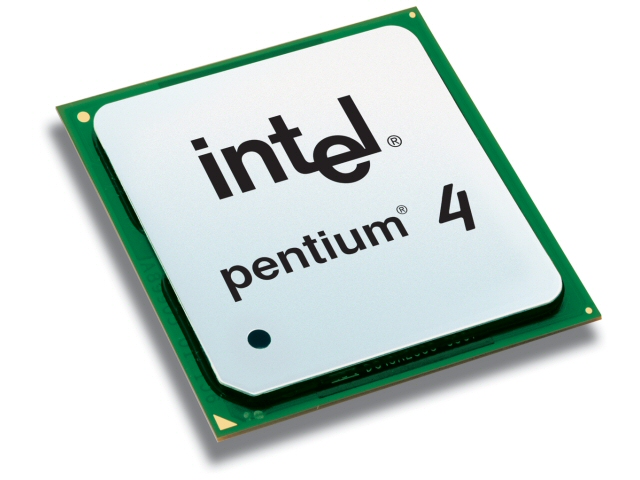

Rabu, 17 Februari 2010
If you are looking for a pen and stylus combination that looks sharp enough
to carry to your next board meeting – but that won’t break the bank; here is
something you should take a look at.
The ttools Premierpoint™
Stylus/Pen, available from Stylus
Central, has a chrome look that seems almost formal . The design
reminds me of a slightly deco piece of artwork; and the price is such that if
someone "borrows" it from you, you won’t take too big a hit in the
wallet.

The pen has an interesting style, in that when the ballpoint tip is
retracted, the black rim that surrounds the pen end actually becomes the stylus.
There is a special plastic "lip" that extends on the front, and dips
down – becoming an easy to use and smooth writing tip.
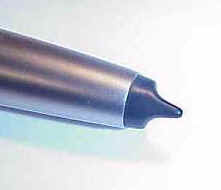
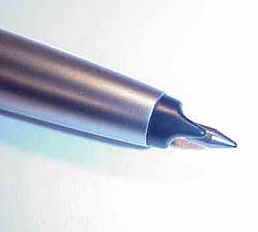
I tried the stylus tip with and without screen protection, and it wrote
equally well either way.
The only negative that I can see to this type of tip involves what happens if
the tip is damaged. I don’t see any easy way to remove the black band from the
bottom of the pen. Since the stylus tip is exposed all of the time, I think it
would be prudent to give it a once over before you use it – just to make sure
that you haven’t damaged it somehow – before you actually use it on your PDA’s
screen.
Hidden in the clicker of the pen is a reset pin. While the reset pin should
be long enough for most Palm PDAs and Pocket PCs; it is definitely too short for
the reset button on the m100.
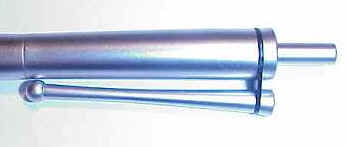
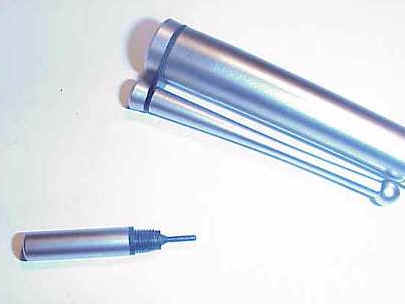
One of the neatest features about the Premier, involves the pocket clip. It’s
true that you can tuck the clip on your shirt with ease – but the pocket clip
also possesses a hidden talent: The pen can dock into the silo of some
PDAs.
Here I have the Premier docked in the silo of my IIIc. It will also fit the
m100 silo. On the Vx, it should be able to sit to the side of the PDA, as it
does on the V-Tech Helio pictured here – not to the rear, as it does in the PDAs
I have already mentioned. The Premier will not fit the silo on the iPAQ, as the
silo hole is set too far in from the side.
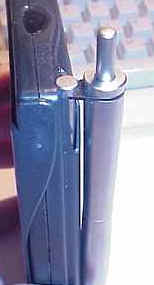
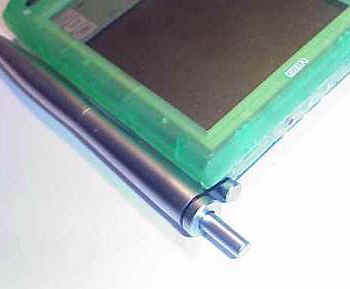
The Premier has a nice heft to it, being neither too heavy nor light, and is
quite comfortable in the hand. It’s curvy shape – being just a little thicker on
the bottom end – makes it fit nicely in your grip.
Price: $24.99
Pros:
Interesting, slightly deco style design
Hidden reset pin in clicker
Feels good "in hand"
Uses standard Parker refills
Apple Mighty Mouse Compare Prices
First off, the Mighty Mouse is stark white. It will match most Macs nicely, but it may clash a bit with your Windows PC (the Mighty Mouse supports OS X Tiger and Windows 2000 and XP).
Secondly, there aren't really left and right buttons to click. The top shell of the Mighty Mouse is smooth, but the touch-sensitive hardware beneath can sense where you're depressing and activate a secondary function for the right click. Additionally, there's another programmable button that's used by squeezing the mouse between your thumb and fingers. It's a bit far up on the mouse, so you might have to reposition to access it, but it does add another click.
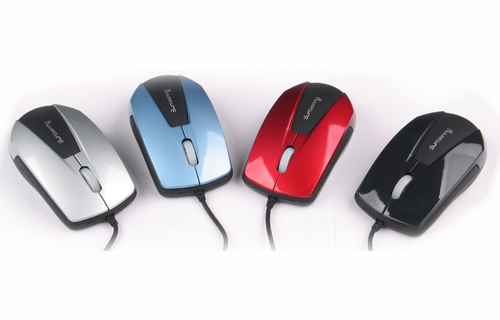

Next, there's the scroll wheel. Well, it's technically not a wheel at all--the little nub in the middle of the mouse is termed a scroll ball by Apple, and it allows you to scroll not only up and down but side to side as well. The scroll ball also serves as a middle click. Just press down on the ball and you've got a fourth button action.
All of the button actions can be programmed, and the scrolling movements of the scroll ball can be adjusted or even turned off if you don't want them. We did experience some errant clicks at first, especially with the middle and right click actions, but after an adjustment period the mouse proved quite reliable (it turns out we were holding our index finger down too hard on the left side of the mouse).
There's a 29-inch USB cord for the Mighty Mouse (it supports both USB 1.1 and 2.0), and rumor has it that Apple will come out with a Bluetooth version in the future.
At an MSRP of just under $50, the Mighty Mouse isn't a bargain, but it's a definite step forward for Apple and for Mac--or Windows--users who want more aesthetics with their input device.
Pro: Four buttons. Scroll ball moves on two axes.
Con: Pricey. Clicking action takes some getting used to.
Keyboard Switches
Keyboards use a variety of switch technologies. Capacitive switches are considered to be non-mechanical because they do not physically complete a circuit like most other keyboard technologies. Instead, current constantly flows through all parts of the key matrix. Each key is spring-loaded and has a tiny plate attached to the bottom of it. When you press a key, it moves this plate closer to the plate below it. As the two plates move closer together, the amount of current flowing through the matrix changes. The processor detects the change and interprets it as a key press for that location. Capacitive switch keyboards are expensive, but they have a longer life than any other keyboard. Also, they do not have problems with bounce since the two surfaces never come into actual contact.
All of the other types of switches used in keyboards are mechanical in nature. Each provides a different level of audible and tactile response -- the sounds and sensations that typing creates. Mechanical key switches include:
- Rubber dome
- Membrane
- Metal contact
- Foam element

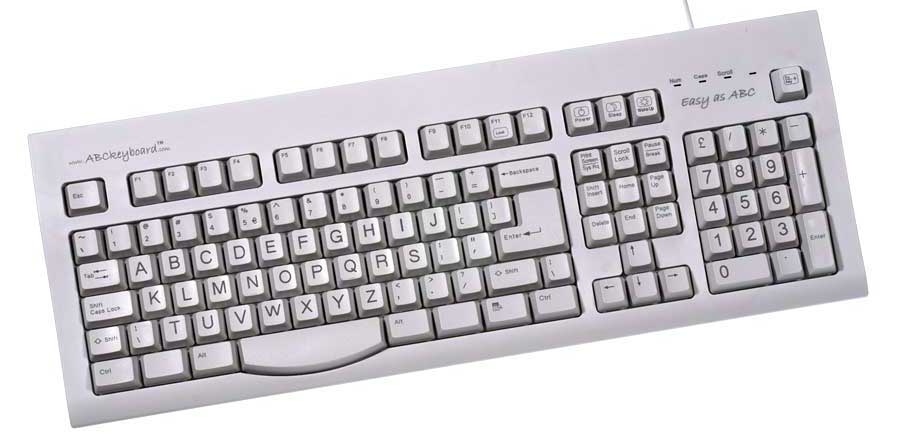

Rubber dome switches are very common. They use small, flexible rubber domes, each with a hard carbon center. When you press a key, a plunger on the bottom of the key pushes down against the dome, and the carbon center presses against a hard, flat surface beneath the key matrix. As long as the key is held, the carbon center completes the circuit. When the key is released, the rubber dome springs back to its original shape, forcing the key back up to its at-rest position. Rubber dome switch keyboards are inexpensive, have pretty good tactile response and are fairly resistant to spills and corrosion because of the rubber layer covering the key matrix.
Rather than having a switch for each key, membrane keyboards use a continuous membrane that stretches from one end to another. A pattern printed in the membrane completes the circuit when you press a key. Some membrane keyboards use a flat surface printed with representations of each key rather than keycaps. Membrane keyboards don't have good tactile response, and without additional mechanical components they don't make the clicking sound that some people like to hear when they're typing. However, they're generally inexpensive to make.
Metal contact and foam element keyboards are increasingly less common. Metal contact switches simply have a spring-loaded key with a strip of metal on the bottom of the plunger. When the key is pressed, the metal strip connects the two parts of the circuit. The foam element switch is basically the same design but with a small piece of spongy foam between the bottom of the plunger and the metal strip, providing a better tactile response. Both technologies have good tactile response, make satisfyingly audible "clicks," and are inexpensive to produce. The problem is that the contacts tend to wear out or corrode faster than on keyboards that use other technologies. Also, there is no barrier that prevents dust or liquids from coming in direct contact with the circuitry of the key matrix.
Different manufacturers have used these standard technologies, and a few others, to create a wide range of non-traditional keyboards. We'll take a look at some of these non-traditional keyboards in the next section.






